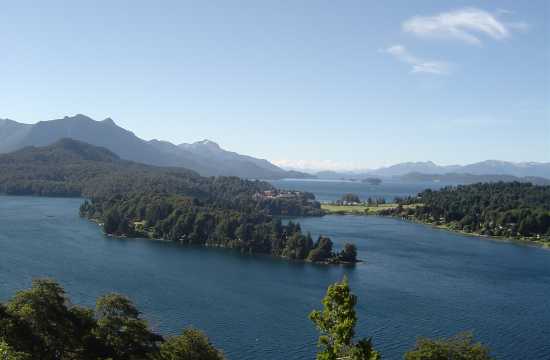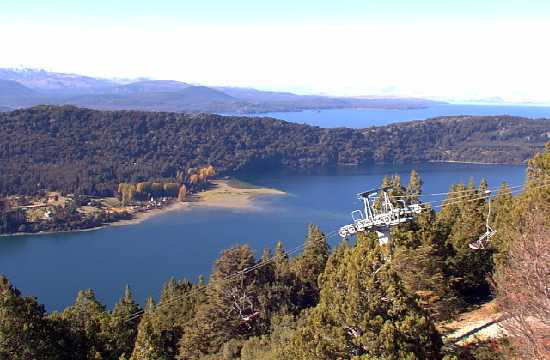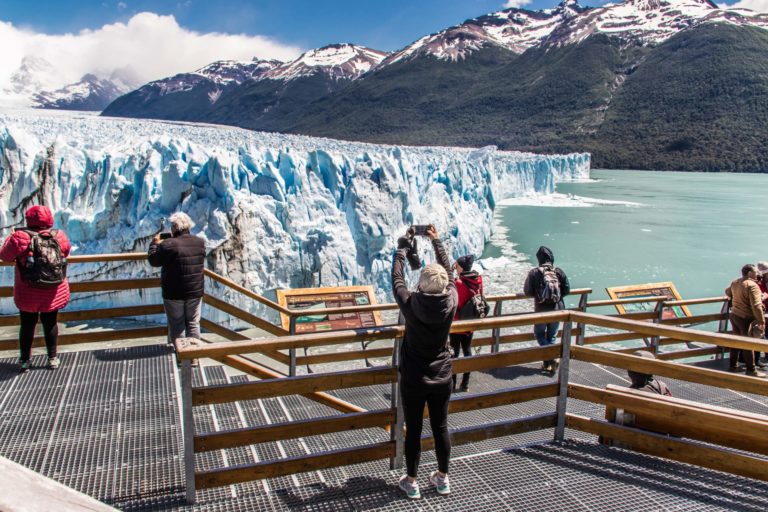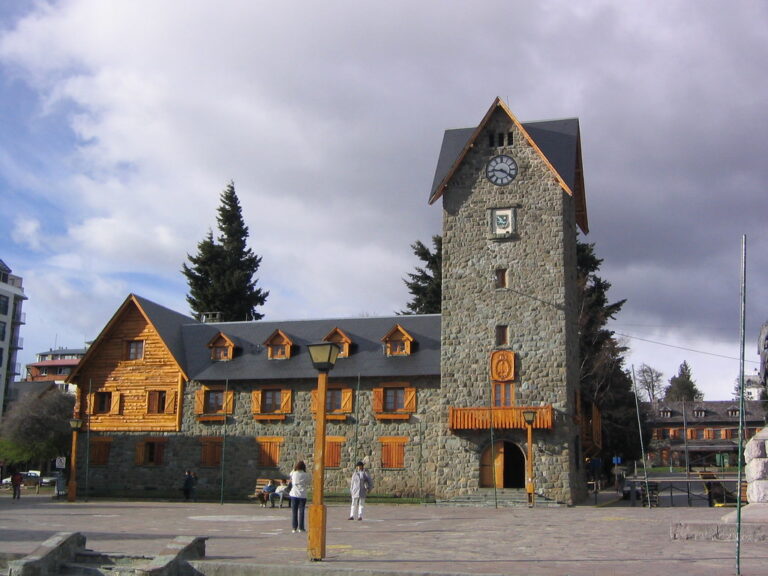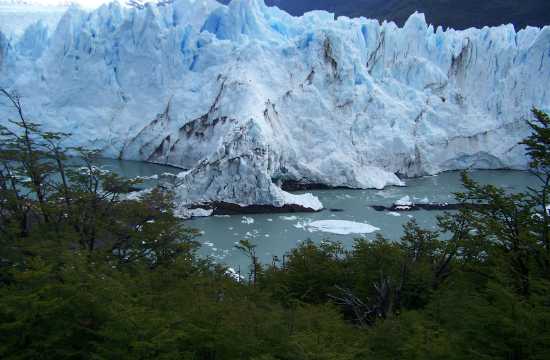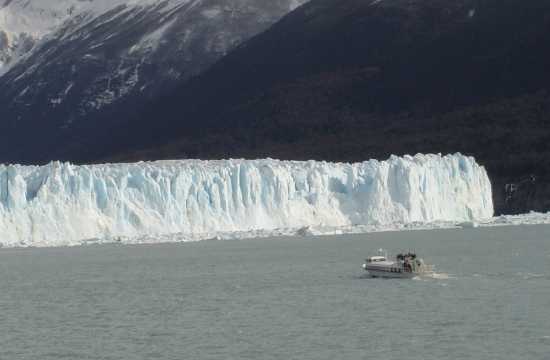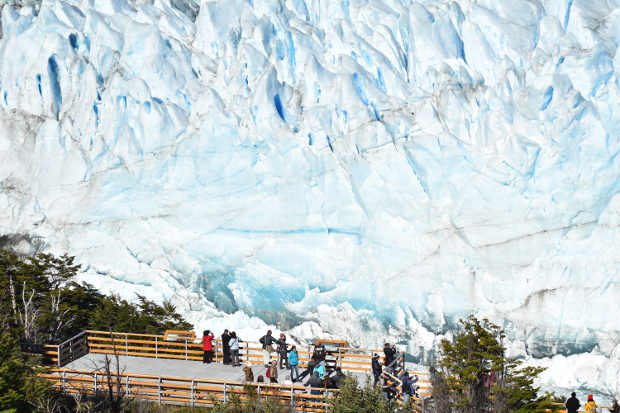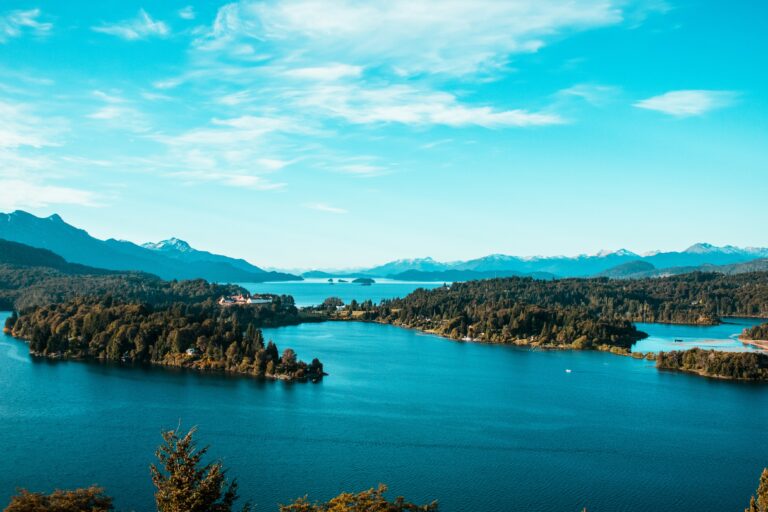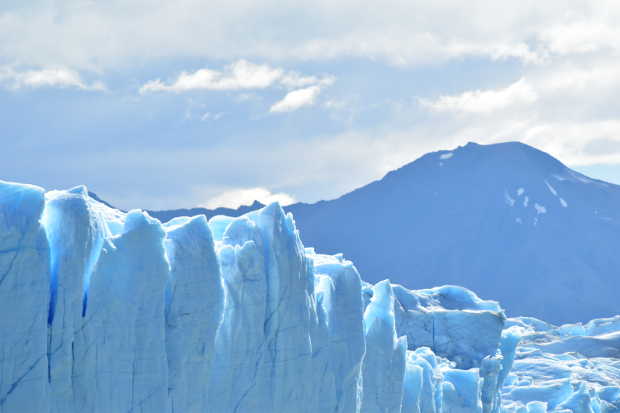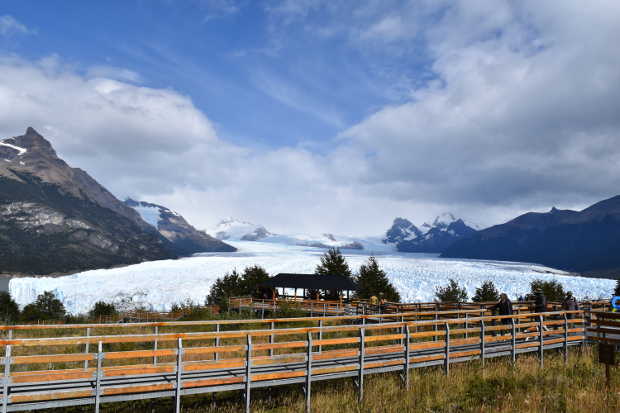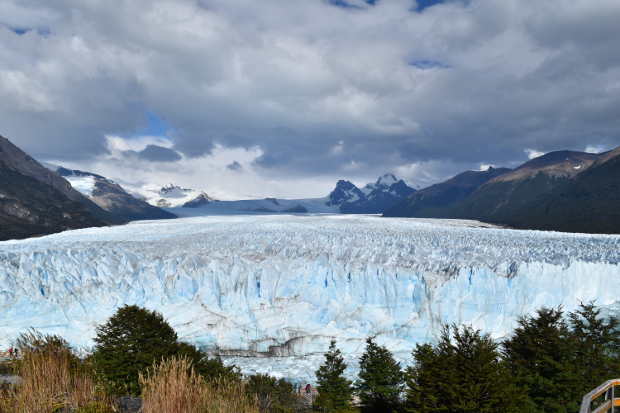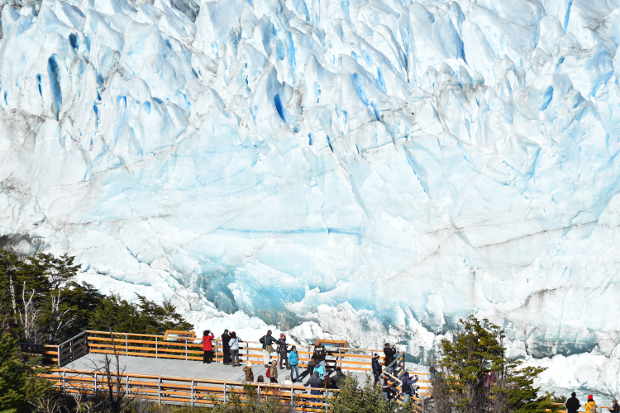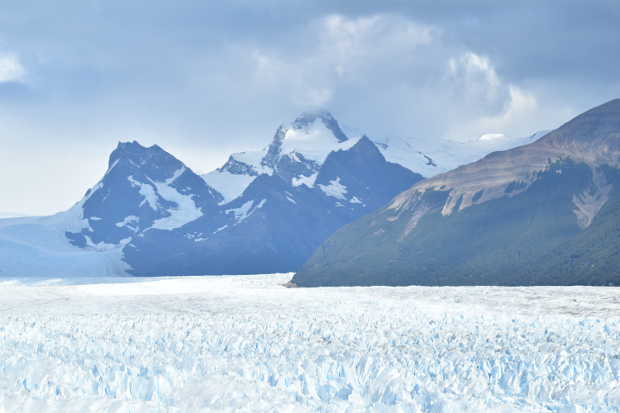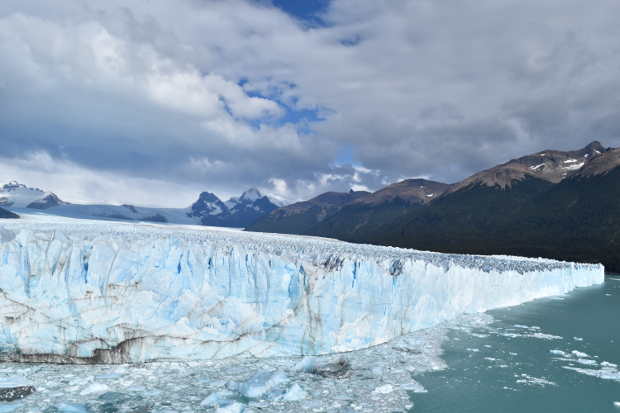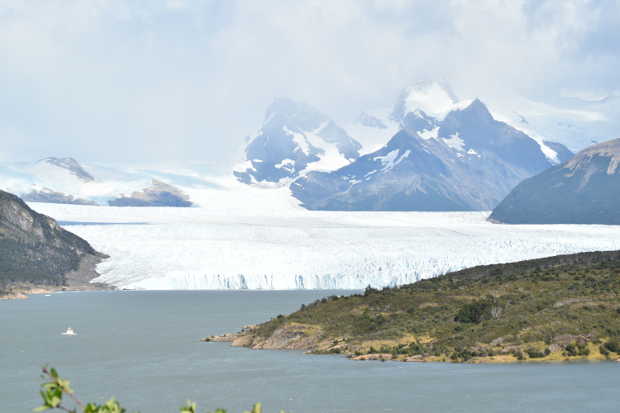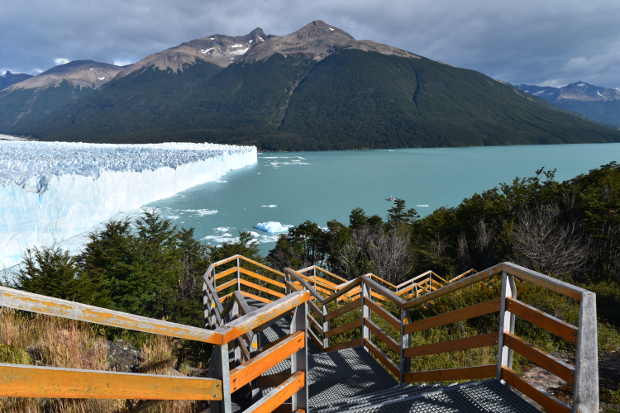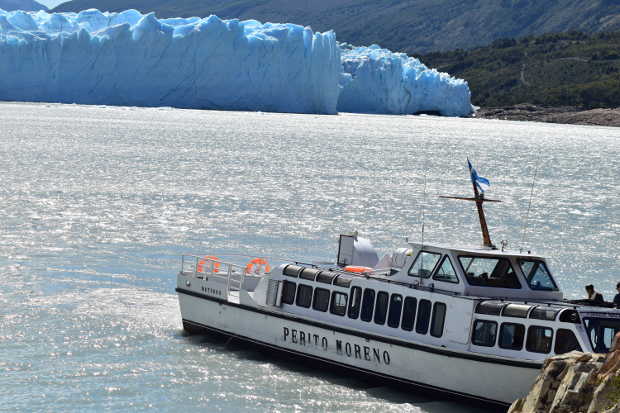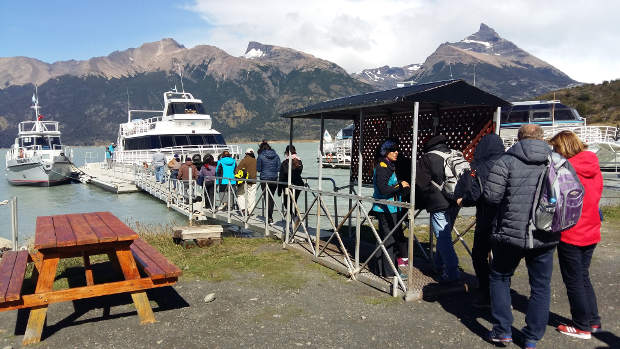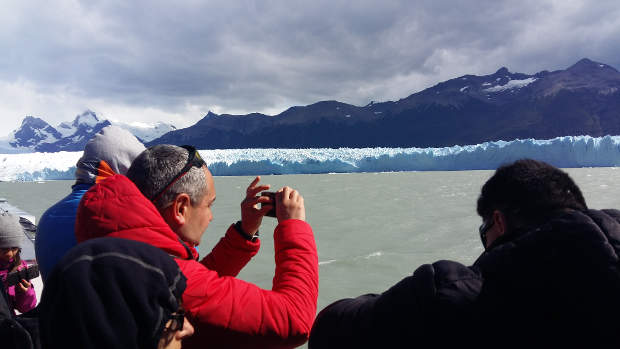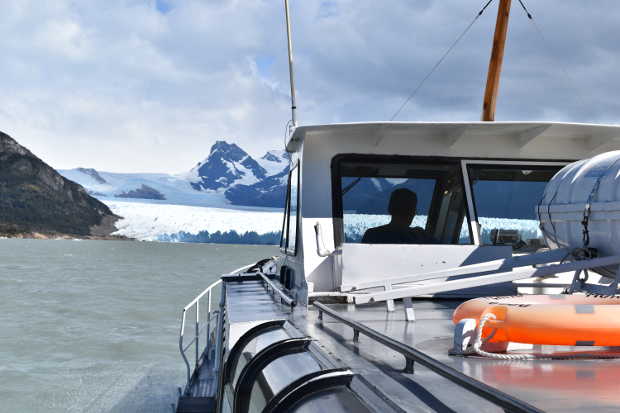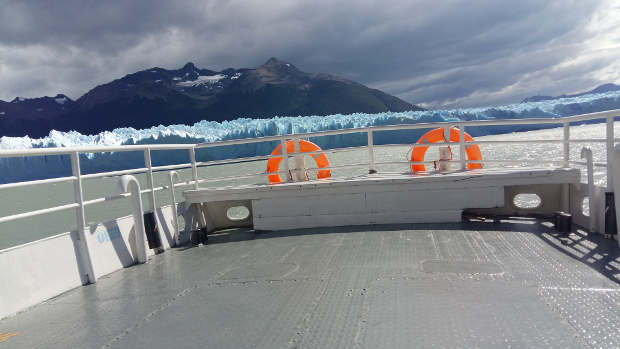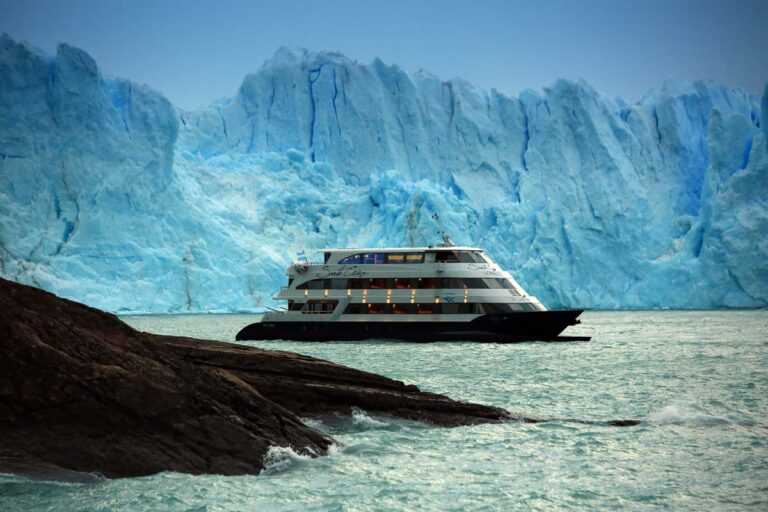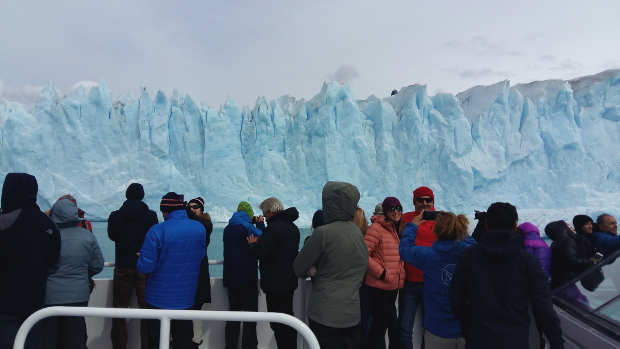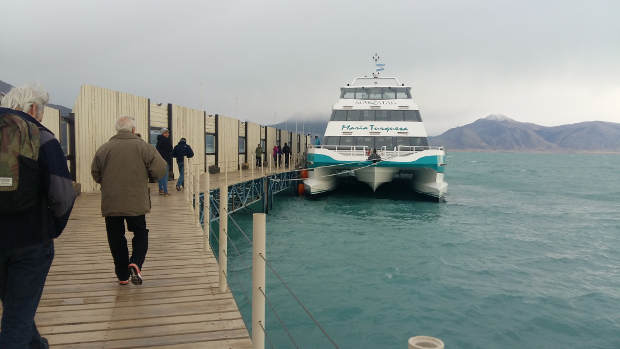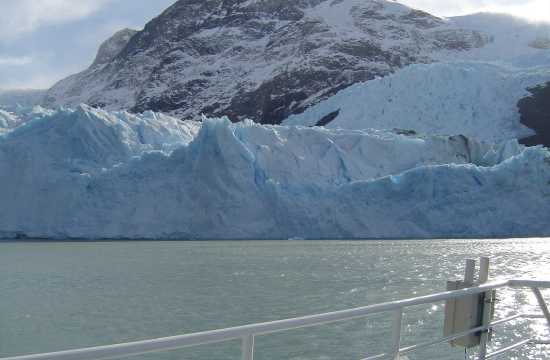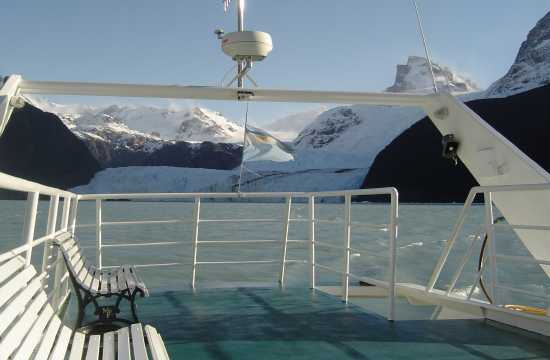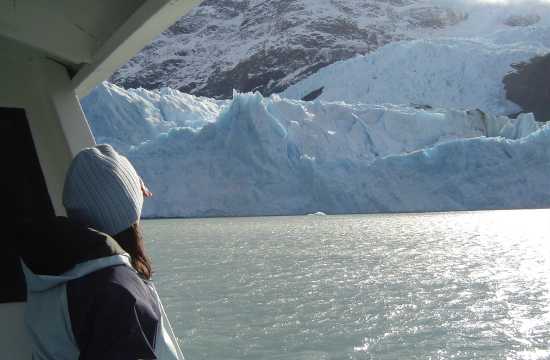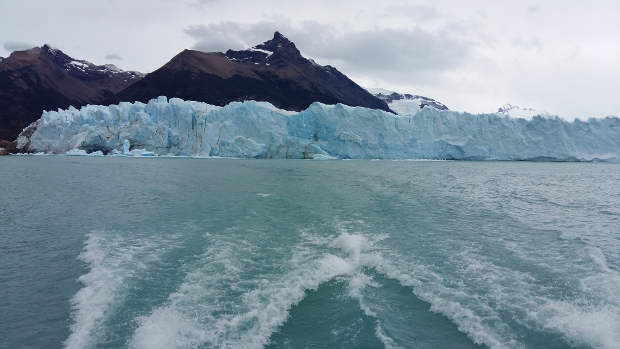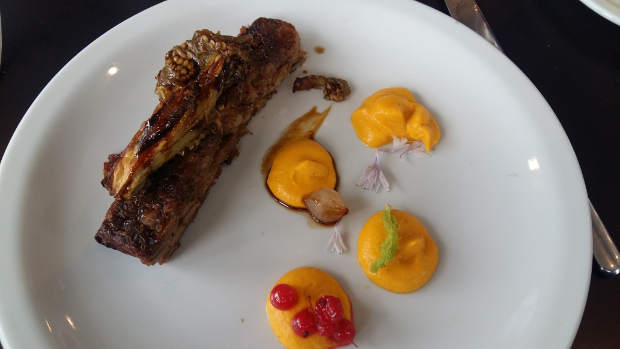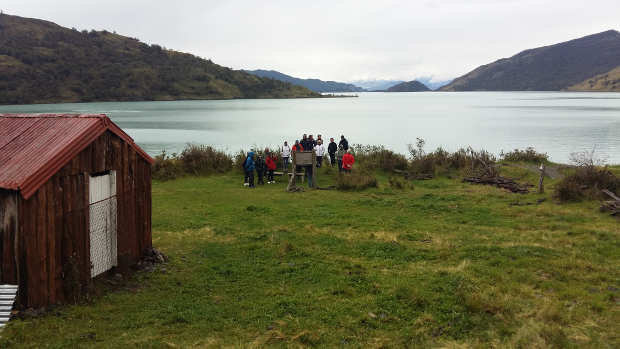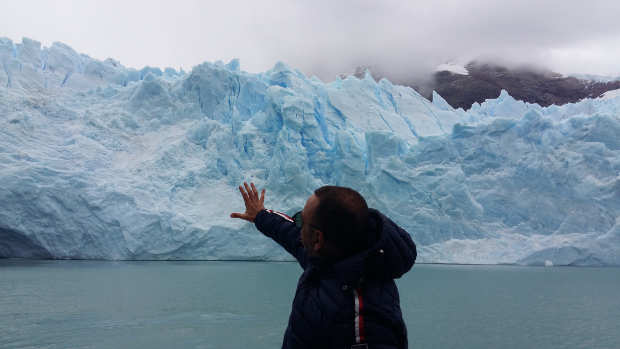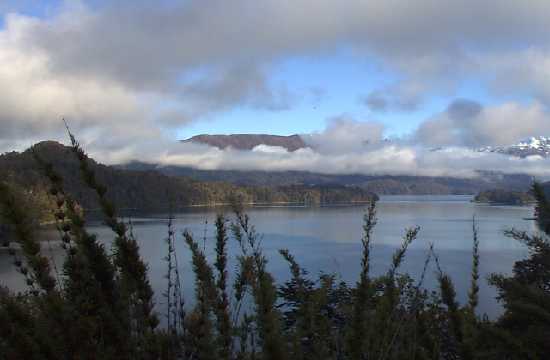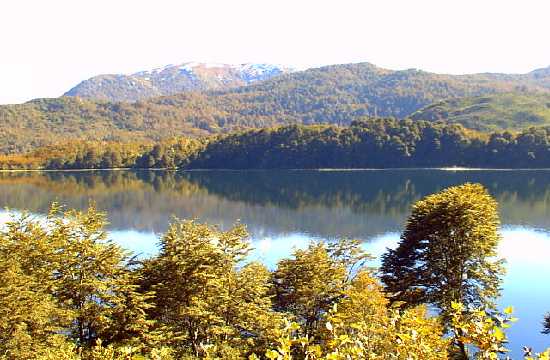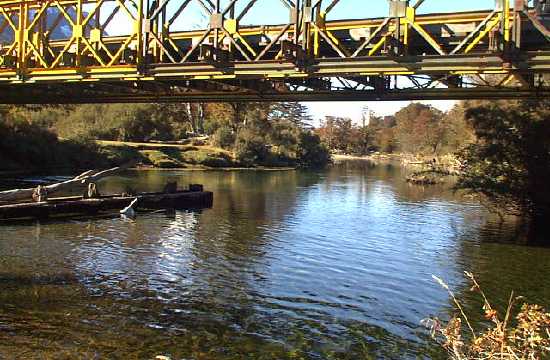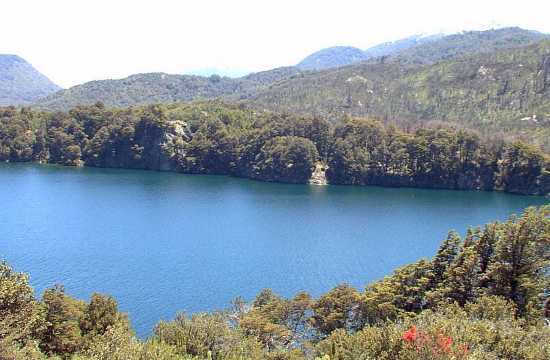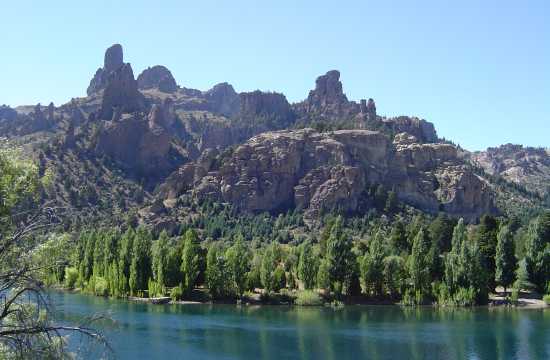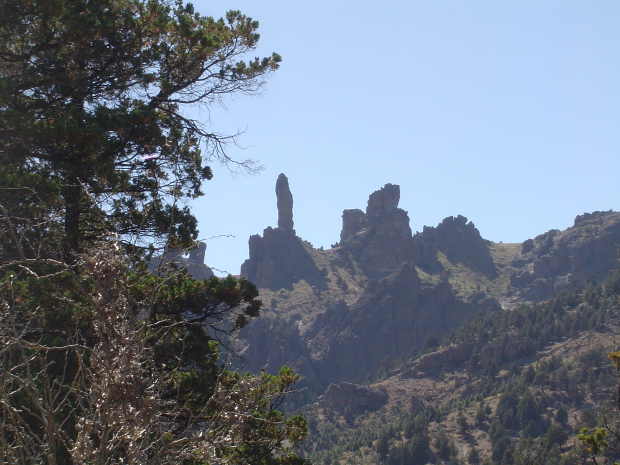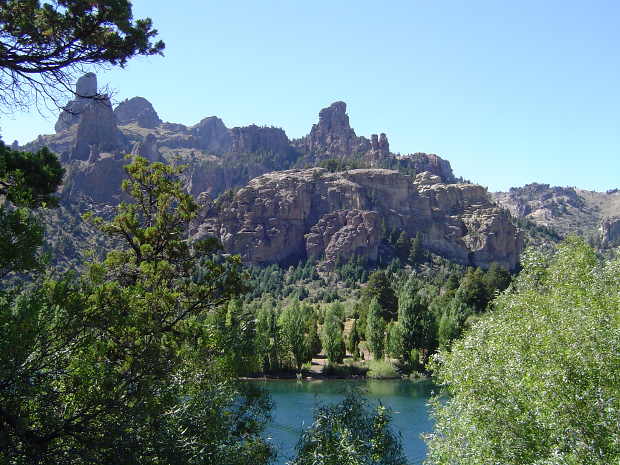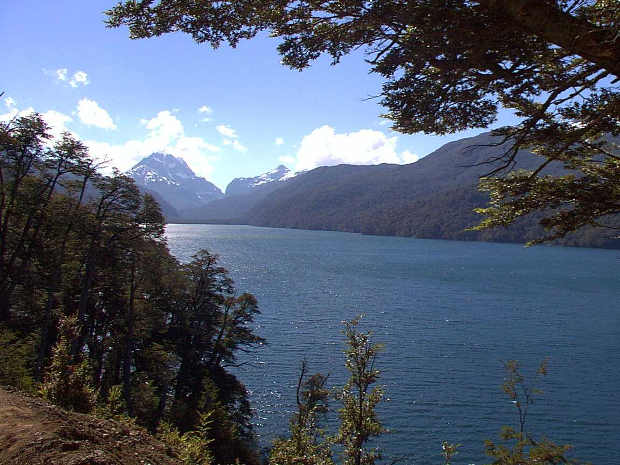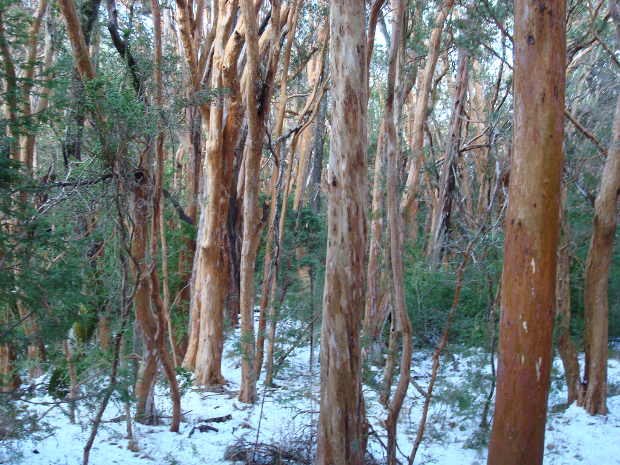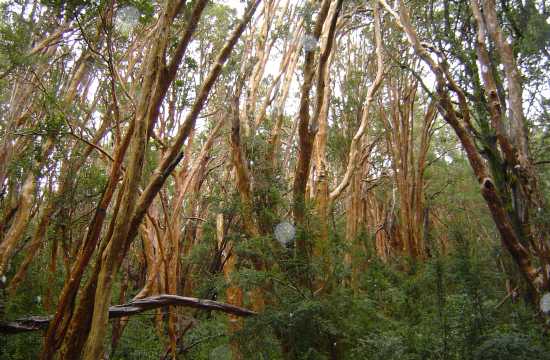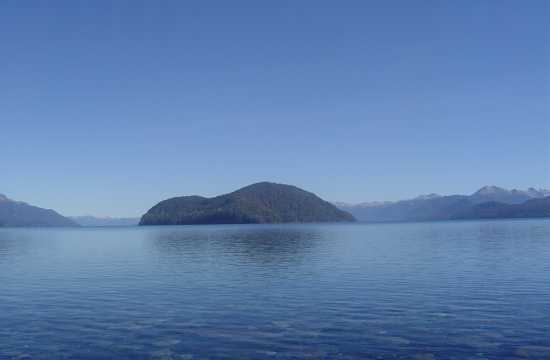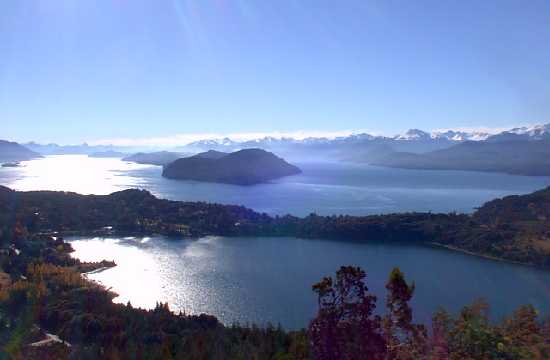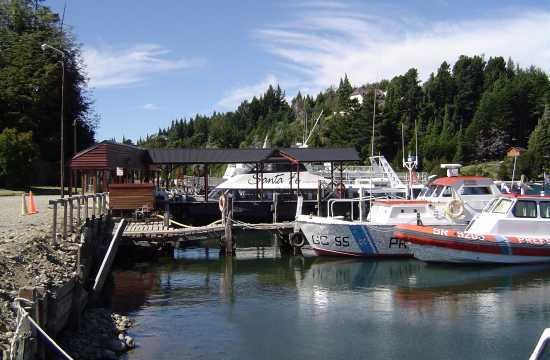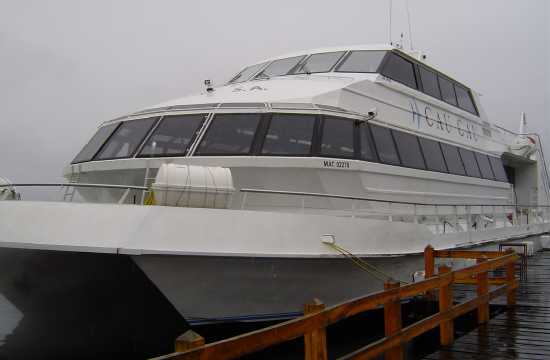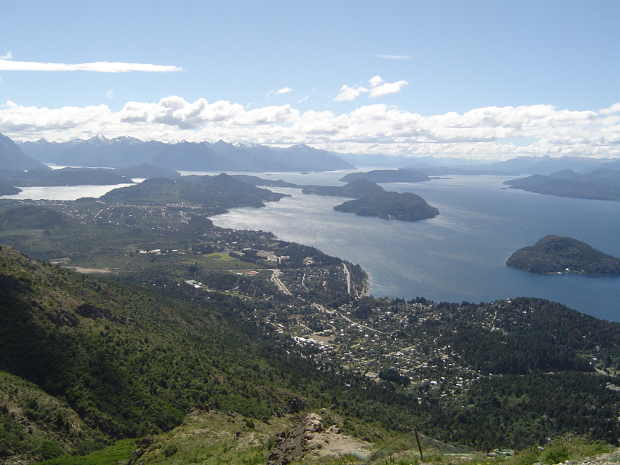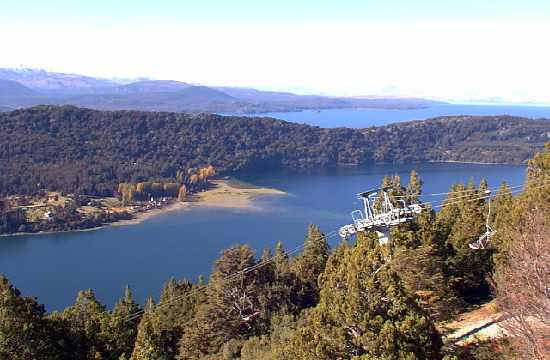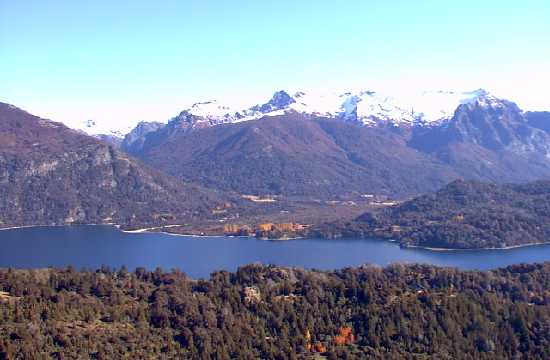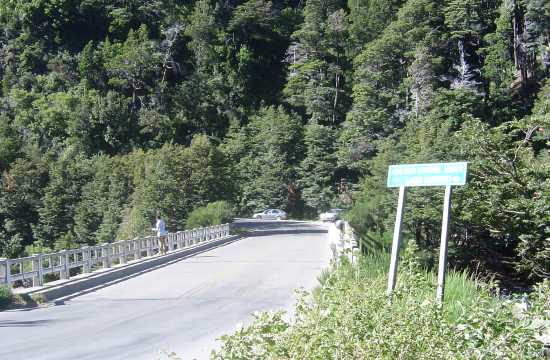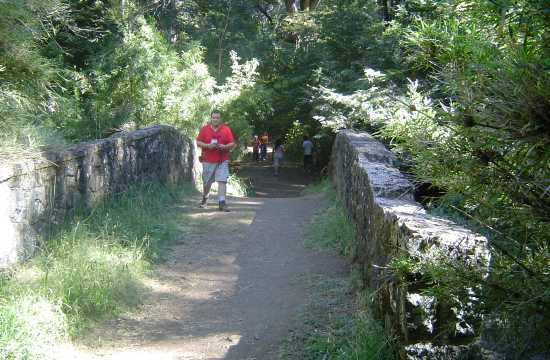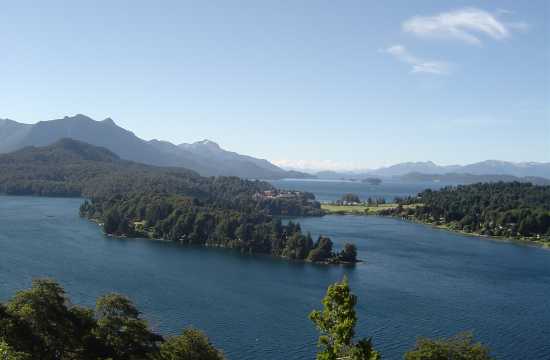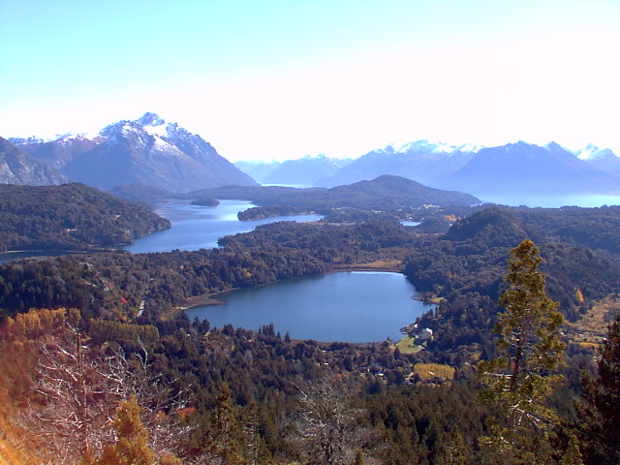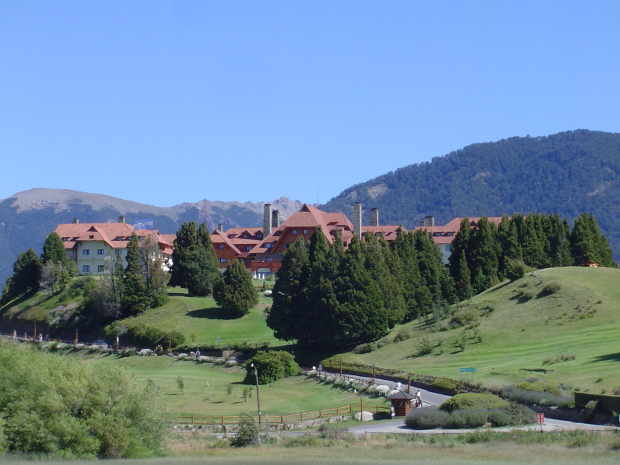The Tour, in detail
Day 1:
El Calafate: Reception and transfer to the hotel. Accommodation. Free time to explore the El Calafate Town and the shores of beautiful Nimes Lagoon.
Day 2:
Perito Moreno Glacier:
Some moments etch themselves into memory—not through words, but through silence. Among Patagonia’s most awe-inspiring excursions, the encounter with the
Perito Moreno Glacier remains unequaled: towering, alive, and in constant motion, a monumental wall of ice that
cracks, roars, collapses, and slowly
rebuilds itself.
The full-day excursion begins in the morning, departing from
El Calafate and tracing the shoreline of
Bahía Redonda, the rounded bay of
Lake Argentino. The journey reveals the solitary silhouette of
Isla Solitaria floating in the water’s expanse. From there, the route enters the windswept
Patagonian steppe, a vast landscape of ochres and silvers. Along the way, landmarks appear:
Cerro Comisión (also known as
Elephant Hill), the
Centinela River,
Cerro Frías, and traditional ranches like the well-known
Estancia Alice. After crossing the
Mitre River, the road enters
Los Glaciares National Park.
The scenery shifts dramatically. The dry steppe gives way to lush forests of southern beech trees.
In just a few miles, the environment transforms into a green, humid corridor of lengas, ñires, evergreen beech, and the brilliant red blooms of the notro. One of the most iconic moments of the journey occurs at the
Curva de los Suspiros—the “Sighs Curve”—named for the audible gasp that often escapes as the glacier appears for the first time in the distance.
Farther along, the road reaches the
main viewpoint, where the entire
3-mile-wide face of the glacier comes into view. But the most intimate encounter happens at the
walkways—a network of platforms and paths that bring visitors just a few hundred feet from the ice wall itself. Rising more than
200 feet above the lake’s surface, the glacier looms in silence, marked by deep blue crevices, translucent shadows, and jagged towers of frozen time. Every so often, a thunderous crack splits the air. A chunk of ice breaks free and crashes into the lake, sending ripples across the stillness.
The average time spent at the walkways is about two hours, allowing for unhurried exploration. Inside the national park, a visitor area offers
food and refreshments, with privileged views of the glacier and surrounding peaks.. The visit to the Glaciers National Park includes
Nautical Safari: This short but unforgettable navigation takes place on
Lago Rico, offering an up-close journey along the
southern face of the Perito Moreno Glacier, a section otherwise inaccessible from land-based viewpoints.
The experience reveals the glacier from a
completely new perspective, highlighting its towering ice walls and the frequent
calving of massive ice blocks, which break off with a thunderous noise and drift as
deep-blue icebergs, passing just meters from the boat and coloring the water with their ancient hue.
The vessel, with a capacity of approximately
70 passengers, maintains a safe yet close distance as it navigates the
entire southern front of the glacier.
Boarding takes place at
Puerto Bajo de las Sombras, located
3.7 miles (6 kilometers) from the main Perito Moreno Glacier viewpoint.
Day 3:
Transfer to the private port, for the splendid Gourmet Glaciers Experience:
This full-day journey aboard the
María Turquesa Cruise blends two of southern Patagonia’s greatest pleasures: sailing among glaciers and enjoying refined cuisine surrounded by breathtaking scenery.
The experience begins early in the morning with a transfer to
Punta Bandera, where boarding from the
Private Port La Soledad takes place . The navigation unfolds across the vast expanse of
Lake Argentino, offering a privileged perspective on the
Los Glaciares National Park—a perspective both immersive and remarkably close to the ice.
The first sights appear after crossing
Escuadra Bay and the
Condoreras Wall: the
Seco and
Heim Glaciers, suspended from mountain slopes and peaks—so-called “hanging glaciers.” The cruise continues south toward the
Spegazzini Channel, leading to the glacier of the same name. This towering ice front rises between
260 and 440 feet above lake level, allowing for an awe-inspiring close-up approach.
The next stop is
Puesto de las Vacas, a calm bay nestled within the channel. Here, the captain cuts the engines to allow a brief, guided walk along the shore, led by the onboard team of naturalist guides.
Later, the cruise approaches the barrier of icebergs that blocks access to the
Upsala Channel. The distant outlines of the
Upsala and
Bertacchi Glaciers can be admired from the deck. A
Gourmet boxed lunch, with non-alcoholic beverages included, is served amid this striking scenery.
The journey then continues through the
Iceberg Channel toward the northern face of the
Perito Moreno Glacier, where the vessel stops to observe the dramatic calving of ice blocks crashing into the lake—a spectacle of sound, movement, and stillness.
Return to port is scheduled for 5:00 p.m. followed by the transfer back to El Calafate.
Note: When booking with us, guests may request for an upgrade to the
VIP Premium Deck of the María Turquesa Cruise, an exclusive area with space for just
16 passengers. This option not only offers privacy but a full lunch with alcoholic beverages, plus complimentary cafeteria service throughout the navigation.
Day 4:
Breakfast and transfer to the airport to fly to Bariloche. Reception and transfer to the hotel. Lodging.
Day 5:
San Martín de los Andes by Seven Lakes:
A full-day journey through
postcard-perfect scenery, linking Nahuel Huapi and
Lanín National Parks across approximately 250 miles of lakes, forests, and mountain roads.
The day begins early with departure from
Bariloche heading east along the shoreline of
Lake Nahuel Huapi toward the source of the
Limay River. From there, the route continues north along the lake’s edge until reaching the mountain village of
Villa La Angostura, where a short stop is made.
This first segment follows a winding road that alternates between forested stretches and sudden clearings that open onto the lake. Throughout the drive, panoramic views unfold across
Lake Nahuel Huapi and, in the distance, the silhouette of
Bariloche on the opposite shore.
From
Villa La Angostura, the route enters
the famed Seven Lakes Road, one of Patagonia’s most scenic drives. The journey passes along the shores of
Lakes Espejo,
Correntoso,
Escondido,
Villarino,
Falkner,
Machónico, and
Lácar, at whose far end lies the town of
San Martín de los Andes.
The landscape throughout is a constant dialogue between water, forest, and sky. Every stretch feels like a new frame in an endless reel of natural beauty.
Upon arrival in
San Martín de los Andes, free time allows for lunch at one of the many local restaurants, or a walk along the lakeshore to enjoy a simple picnic outdoors.
The return follows an alternate route via
Paso Córdoba, running alongside
Lake Meliquina. This section of the trip reveals a less forested, more open terrain—just as striking in its vastness. The road follows the course of the
Filo Hua Hum and
Caleufú Rivers, ending at the area known as
Confluencia, where the
Limay and
Traful Rivers meet. Here, wind-carved rock formations form the surreal landscape of the
Valle Encantado (Enchanted Valley).
Arrival back in
Bariloche is scheduled for
8:00 p.m.. The excursion is suitable for all ages and requires no special equipment.
Day 6:
Victoria Island and Bosque de Arrayanes:
A short journey in distance, but vast in sensation.
This excursion unfolds a sequence of untouched landscapes,
suspended atmospheres, and
ecosystems unlike any other in Patagonia.
It begins at Puerto Pañuelo, about
15 miles (25 km) from the center of Bariloche. A
quiet, steady navigation crosses Lake Nahuel Huapi and arrives at Puerto Anchorena, on Victoria Island.
From there, several paths open up:
guided or self-guided trails that wind through
native forests,
hidden beaches, high viewpoints, and areas once used for forest cultivation. Some trails lead to sites with
ancient rock paintings, traces of the region’s earliest inhabitants. Others offer only the
pure silence of the landscape.
The second leg of the journey continues across the lake toward the Quetrihué Peninsula, where a forest seemingly lifted from a storybook awaits: the Arrayanes Forest. A
wooden boardwalk allows passage through this rare ecosystem. The cinnamon-colored bark of the arrayanes, soft and mottled with white, twists upward, forming
groves of tangled trunks and filtered light. Many rise more than
50 feet (15 meters) tall, creating a
setting that feels dreamlike.
No physical effort is required to enjoy this experience. Trails can be followed at one’s own pace. The island offers
rest areas, a café, and panoramic overlooks perfect for quiet pauses.
Departure and return times vary depending on the season and daylight hours. What remains constant is the
timeless beauty of a landscape that feels untouched by urgency.
Day 7:
After breakfast it is time to say farewell to Bariloche taking the charming Small circuit:
This excursion offers a sweeping overview of the lake district and the Andean foothills surrounding Bariloche.
The route covers approximately 40 miles, most of it tracing the shoreline of
Lake Nahuel Huapi.
The journey heads west along the coastal avenue, winding through forests and scenic overlooks. Along the way, the landscape reveals the
Huemul Island,
Cerro Campanario, the
Llao Llao Peninsula, the iconic
hotel of the same name, and the charming
San Eduardo Chapel. Each turn offers a new composition of water, peaks, and Patagonian forest.
A stop includes the optional chairlift ride to the summit of
Cerro Campanario, widely regarded as one of the most breathtaking panoramic viewpoints in the region, where lakes and mountain ranges unfold in all directions.
After passing through the Llao Llao Peninsula, the route crosses a bridge connecting
Lakes Nahuel Huapi and
Moreno, skirting the latter’s shoreline before crossing a second bridge toward
Laguna El Trébol. From there, the return to Bariloche begins, following gentle curves along the edge of the lagoon, framed by reflections and native forest. The circuit lasts approximately
3 hours. Afterwards, transfer to the Bariloche airport. End of our services.
